Heavy Mold Flipping Problems? One Mold Flipper Solves It All
Handling heavy molds in a steel mill or manufacturing plant presents a constant challenge. The traditional method of using overhead cranes and chains to flip these massive, expensive pieces of equipment is slow, inefficient, and incredibly risky. A single moment of imbalance or a slipped chain can lead to catastrophic failure, damaging a mold that costs tens of thousands of dollars and, far worse, causing serious injury to your team members. This constant risk creates production bottlenecks, ties up your valuable crane capacity, and adds a layer of stress to your daily operations that you simply don't need.
A mold flipper, also known as a mold upender or tilter, solves heavy mold flipping problems by providing a stable, controlled, and automated mechanical solution. It is a purpose-built machine designed to securely grip and rotate molds up to 180 degrees with the push of a button. This process eliminates the need for dangerous and imprecise crane maneuvers, reduces the labor required for the task, and fundamentally protects both your personnel and your valuable molds from harm. It transforms a high-risk, multi-person job into a safe, predictable, one-person operation.
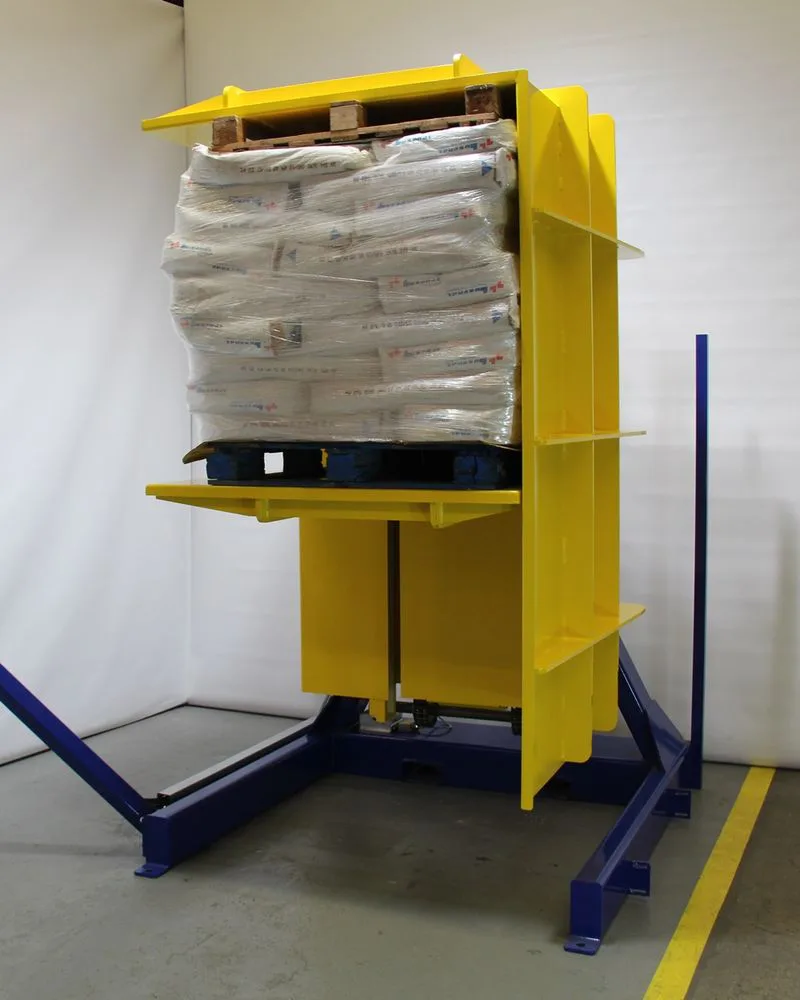
I’ve walked through countless factories in my career, from when I was an engineer on the floor to now, as the owner of SHJLPACK. I’ve seen the same worried look on managers' faces as a multi-ton mold dangles precariously from chains. It’s a problem that many have accepted as a "cost of doing business." But it doesn't have to be. The solution is simpler and more effective than you might think. Let's dig deeper into how this one piece of equipment can resolve these long-standing issues and become a cornerstone of a modern, efficient facility.
How can a mold flipper improve safety and reduce workplace accidents?
Every time your team prepares to flip a heavy mold with a crane, you are initiating a high-risk procedure. You rely on the perfect balance of chains, the skill of the crane operator, and a great deal of luck. A slight miscalculation, a worn-out sling, or a moment of inattention can lead to a disaster. You are constantly concerned about your company's safety record, the rising costs of insurance, and the well-being of the people who trust you to provide a safe work environment. This persistent "what-if" scenario is a heavy operational and emotional burden for any responsible leader. A dedicated mold flipper completely changes this dynamic by engineering the risk out of the process, creating a controlled, predictable, and fundamentally safe operation every single time.
A mold flipper improves safety by taking the mold out of the air and securing it to a stable, heavy-duty platform. It then uses powerful and reliable mechanical or hydraulic systems to perform a smooth, controlled rotation. This design eliminates all the major risks associated with traditional methods: it removes the need for manual handling and positioning under a suspended load, it gets rid of the danger of overhead lifting in open spaces, and it prevents sudden, uncontrolled load shifts. By doing this, it drastically reduces the potential for near-misses, equipment damage, and life-altering workplace accidents.
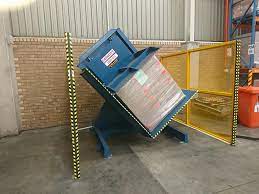
The Inherent Dangers of Traditional Mold Flipping
I remember a visit to a potential client's factory years ago. I watched as three workers attempted to flip a large die for a stamping press. They used an overhead crane, attaching heavy chains to the mold. The process was tense. The mold swayed as it was lifted. The workers had to use long poles to try and guide it, standing dangerously close to the suspended load. One of the chains slipped slightly, and the entire mold lurched sideways. Everyone froze. Thankfully, it held, but the risk was undeniable. This single event perfectly illustrates the flaws of the traditional method. It relies too much on human judgment under pressure and exposes people to unnecessary danger. The key risks include crane operator error, unexpected load shifts due to an off-center of gravity, sling or chain failure, and the severe pinch and crush hazards for anyone working nearby.
Engineered Safety: The Mold Flipper's Mechanisms
In contrast, a mold flipper is a system where safety is the primary design principle. It's not an afterthought. The entire process is contained and controlled. A modern mold flipper is built with a series of integrated safety features that work together to protect both the operator and the equipment.
First, the machine itself is built with a robust, heavy-gauge steel frame designed to handle loads far exceeding its rated capacity. The mold rests on a wide, stable platform, often with adjustable clamps or a non-slip surface to hold it securely. The rotation is driven by a powerful hydraulic or electromechanical system that ensures a smooth, predictable motion. There is no swinging or jerking. The speed is controlled, preventing dangerous dynamic forces. Most importantly, these machines are equipped with multiple layers of safety technology.
| Safety Feature | Function | How It Prevents Accidents |
|---|---|---|
| Emergency Stop Buttons | Immediately cuts all power to the machine. | Allows any operator to halt the process instantly in case of an issue. |
| Safety Fencing / Cages | Creates a physical barrier around the operating area. | Prevents personnel from accidentally walking into the machine's movement path. |
| Light Curtains | An infrared beam that stops the machine if broken. | Provides a non-contact safety barrier that halts operation if a person or object enters the danger zone. |
| Hydraulic Lock Valves | Prevents the platform from moving if hydraulic pressure is lost. | Ensures the mold remains locked in its position even during a power outage or hose failure. |
| Mechanical Locking Pins | Physically lock the table in the horizontal or vertical position. | Provides a redundant, physical safety measure against unwanted movement during loading/unloading. |
These features transform mold flipping from a reactive, high-skill task into a proactive, low-risk process. It allows a single operator to safely manage the entire operation from a control panel located at a safe distance.
What is the real ROI of a mechanical mold flipper?
When you look at a specialized piece of equipment like a mold flipper, the initial purchase price can seem like a significant capital expense. As a business owner, your first thought is naturally about the cost and whether it's justified for what appears to be a simple, infrequent task. This is a question I faced myself when I was growing my own factory. But the true financial picture becomes clear only when you analyze the hidden, recurring costs of not owning one. Think about the accumulated costs of inefficient labor, the valuable crane time that could be used for core production, the production delays during slow mold changes, the immense cost of repairing or replacing a single damaged mold, and the incalculable cost of a workplace accident. These expenses add up relentlessly.
The real return on investment (ROI) of a mechanical mold flipper is powerful because it stems from a wide range of direct and indirect savings, turning it from a perceived cost into a genuine profit-generating asset. The ROI is calculated from tangible savings like drastically reduced labor costs and reclaimed crane availability, but also from risk mitigation, such as the complete elimination of costs related to mold damage and significantly lower insurance premiums. Furthermore, it boosts profitability by increasing production throughput, thanks to faster, more dependable mold changeover times.
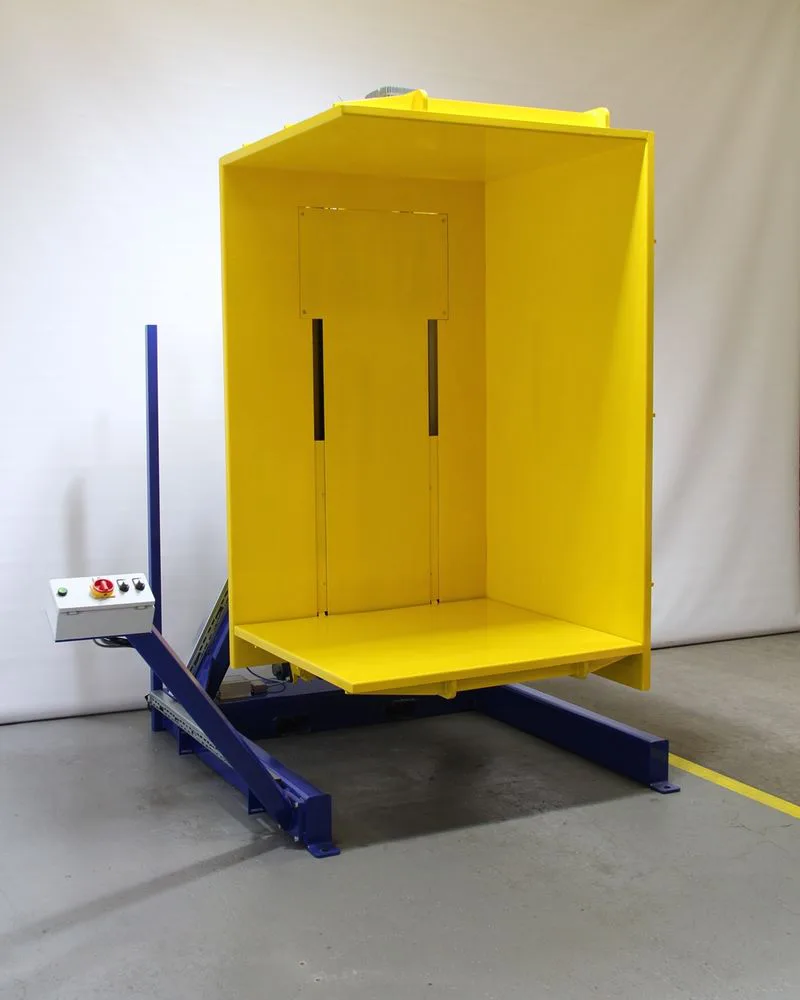
Calculating the Direct Cost Savings
Let's break this down with some practical numbers. For a business owner like Javier, who scrutinizes every investment for its return, this is the most critical part of the evaluation. The direct savings are the easiest to quantify and often justify the investment on their own.
- Labor Reduction: A traditional crane-based flip often requires two to three workers: a skilled crane operator and one or two riggers on the floor. The process can take anywhere from 30 minutes to over an hour. A mold flipper requires only one operator, and the entire cycle is completed in under 5 minutes.
- Reclaimed Crane Time: In a busy steel mill, the overhead crane is a critical production asset. When it's being used for a slow, inefficient task like flipping a mold, it's not available for its primary purpose: moving coils, loading materials, or clearing the production line. This creates a significant bottleneck. Freeing up that crane directly translates to increased production capacity.
Quantifying the Indirect Gains and Risk Mitigation
The indirect benefits are where the mold flipper truly proves its strategic value. These gains protect your bottom line from unexpected, high-impact events.
- Mold Damage Prevention: A heavy manufacturing mold or die can cost anywhere from $20,000 to over $100,000. Dropping or damaging one during a flip is a catastrophic expense that can wipe out profits. A mold flipper's controlled motion virtually eliminates this risk. Preventing just one such incident can often pay for the machine entirely.
- Increased Production Uptime: Faster mold changeovers mean less downtime for your production line. If a mold change is reduced from 60 minutes to 5 minutes, you gain 55 minutes of valuable production time. Over a year, this can add up to hundreds of hours of extra output, directly impacting your revenue and helping you achieve goals like 95% capacity utilization.
- Safety and Insurance: A safer workplace has fewer accidents, which leads to lower workers' compensation insurance premiums. More importantly, it improves employee morale and reduces the risk of costly litigation and regulatory fines associated with workplace injuries.
Let's create a simple ROI table to visualize the savings. Assume a labor rate of $30/hour, a crane operating cost of $70/hour, and 2 mold changes per day.
| Cost Category | Traditional Method (Annual Cost) | Mold Flipper (Annual Cost) | Annual Savings |
|---|---|---|---|
| Labor Cost | 2 workers x 1 hr/change x 2 changes/day x 250 days x $30/hr = $30,000 | 1 worker x 0.1 hr/change x 2 changes/day x 250 days x $30/hr = $3,000 | $27,000 |
| Crane Time Cost | 1 hr/change x 2 changes/day x 250 days x $70/hr = $35,000 | 0.1 hr/change x 2 changes/day x 250 days x $70/hr = $3,500 | $31,500 |
| Mold Damage Risk | High (Potential $50k+ loss) | Negligible | Risk Mitigation |
| Production Uptime | Lower | Higher | Increased Revenue |
| Total Direct Savings | $58,500 |
This simplified example shows over $58,000 in direct, measurable savings per year, delivering a payback period of less than a year for many standard mold flippers.
Can a mold flipper integrate into a modern, digitized steel mill?
You are building a smart factory. You are investing heavily in a Manufacturing Execution System (MES), deploying IoT sensors, and leveraging data to drive decisions. The last thing you want is a new piece of equipment that operates like a disconnected island, unable to communicate with your central intelligence. You rightly worry that a "simple" mechanical device like a mold flipper will create a blind spot in your data stream, hindering your primary goal of achieving total production visualization and automated scheduling. It can feel like taking a step backward when your entire strategy is focused on moving forward.
Yes, a modern mold flipper is designed for and can integrate seamlessly into a fully digitized steel mill. These are not the purely mechanical devices of the past. Today's mold flippers can be equipped with sophisticated PLCs (Programmable Logic Controllers), sensors, and communication interfaces that speak the same language as your factory's MES. They can provide real-time status updates, report cycle counts, send fault diagnostics, and receive commands, becoming a fully integrated and data-rich node in your smart factory ecosystem.
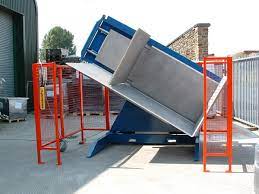
The "Smart" Mold Flipper: More Than Just Motion
The intelligence of a modern mold flipper lies in its control system. The brain of the machine is a PLC, which can be programmed for complex sequences and, more importantly, for communication. This PLC is connected to a range of sensors and components that generate valuable data. For example, variable frequency drives (VFDs) not only control the motor's speed for a smooth ramp-up and ramp-down but also monitor energy consumption. This aligns directly with goals like reducing unit energy consumption. Load cells can confirm the weight of the mold to prevent overloads, and proximity sensors can verify that the mold is correctly positioned before starting a cycle. All this information is available digitally.
Seamless Data Integration with Your MES and SCADA Systems
The key to integration is communication. A smart mold flipper connects to your plant-wide network via standard industrial protocols like EtherNet/IP, PROFINET, or Modbus TCP/IP. This allows for a two-way conversation between the flipper and your central MES or SCADA system.
Here’s how it works in practice:
- Your MES schedules a mold change. It sends a signal to the mold flipper's PLC to be ready.
- An operator loads the mold and initiates the cycle.
- The flipper sends real-time status updates back to the MES: "Cycle Started," "Rotating to 90 degrees," "Rotating to 180 degrees," "Cycle Complete."
- Once the "Cycle Complete" signal is received, the MES can automatically trigger the next step in the process, such as dispatching an automated guided vehicle (AGV) to transport the flipped mold to the press.
This level of integration provides the total production visibility that leaders like Javier are striving for. It also feeds critical data into a predictive maintenance program.
| Feature / Sensor | Data Point Generated | Benefit for MES & Predictive Maintenance |
|---|---|---|
| PLC Cycle Counter | Total number of flips performed. | Tracks mold and machine usage. Can trigger a work order for scheduled maintenance after a set number of cycles. |
| Motor Current Sensor | Real-time amperage draw of the drive motor. | An increasing trend in current draw can indicate bearing wear or lubrication issues, predicting a failure before it happens. |
| Hydraulic Pressure Sensor | System fluid pressure. | A drop in pressure can signal a leak or pump inefficiency, allowing for proactive repair. |
| Fault/Error Codes | Specific diagnostic codes for any malfunction. | Instantly notifies the maintenance team via the MES with the exact nature of the problem, reducing diagnostic time. |
By integrating a mold flipper into your digital ecosystem, you are not just automating a physical task. You are turning a simple machine into a source of valuable data that enhances scheduling, boosts uptime, and supports your factory's entire digital transformation strategy.
What maintenance is required for a mold flipper to ensure high uptime?
You have experience with industrial machinery. You’ve been promised "low maintenance" before, only to find that a machine needs constant adjustments and repairs, causing the exact kind of unexpected downtime you are working so hard to eliminate. Adding another unreliable asset is the last thing you need, especially when your target is a demanding 95% equipment uptime. This concern is completely valid. An unreliable machine doesn't just stop one process; it can cause a chain reaction that disrupts your entire production schedule and erodes profitability.
To ensure high uptime, a well-built mold flipper requires a simple and predictable preventive maintenance schedule that focuses on key wear components. The philosophy is about proactive care, not reactive repair. The required maintenance is straightforward and consists of daily visual checks, weekly lubrication, monthly inspections of hydraulic and electrical systems, and a more thorough annual check of structural components. Following this simple regimen makes the mold flipper one of the most reliable and dependable machines in your entire facility.
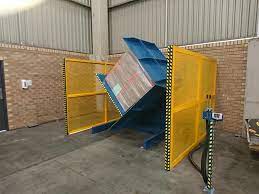
Proactive vs. Reactive Maintenance: A Shift in Mindset
From my experience helping clients, the difference between a machine that runs for 20 years and one that fails in 5 is almost always the maintenance approach. Reactive maintenance means waiting for something to break. This approach guarantees maximum downtime because the failure is always unexpected, and you may not have the necessary parts or personnel on hand.
Proactive, or preventive, maintenance is about scheduling small, quick tasks to prevent large, costly failures. It's about changing the oil before the engine seizes. For a mold flipper, this approach is highly effective because the machines are mechanically simple with predictable wear points. A proactive plan transforms maintenance from an emergency into a scheduled, controlled activity that doesn't disrupt production.
A Practical and Simple Maintenance Checklist
A good supplier will provide a detailed maintenance manual, but most plans boil down to a simple schedule. This is the kind of checklist I provide to my own clients to ensure they get the longevity and reliability they paid for. It's designed to be performed quickly by on-site maintenance staff.
| Frequency | Task | Purpose & What to Look For |
|---|---|---|
| Daily (2 Minutes) | Visual Inspection | Walk around the machine. Look for any visible hydraulic leaks (puddles on the floor), loose bolts, or debris around the machine. Listen for unusual noises during operation. |
| Weekly (10 Minutes) | Lubrication | Lubricate the main drive chain(s) with the recommended grade of oil. Grease the main rotation bearings/bushings at the designated grease points (zerks). |
| Monthly (20 Minutes) | System Checks | Check the hydraulic fluid level in the reservoir and top off if necessary. Inspect hydraulic hoses for signs of cracking, bulging, or abrasion. Check electrical connections in the control panel for tightness. Test all safety features, including E-stops and light curtains. |
| Annually (2-4 Hours) | Deep Inspection | Contract a qualified technician or use trained in-house staff. Inspect all structural welds for any signs of stress or cracks. Check the torque on all critical mounting bolts. Consider taking a hydraulic fluid sample for analysis to check for contamination. |
I have a client who bought a mold flipper from us over 10 years ago. Their maintenance team follows this exact schedule. That machine has run almost every day without a single major breakdown. In contrast, I once visited a factory to quote a new machine where their old flipper (from another brand) had failed. The cause was a seized bearing that destroyed the main driveshaft. The reason? The weekly greasing task had been ignored for months. A ten-minute task that was skipped led to a week of downtime and thousands in repair costs. This is the real-world difference a simple, consistent maintenance plan makes.
Conclusion
A mold flipper is more than just a machine. It is a strategic investment in a safer, more efficient, and modern production environment that delivers a clear and rapid return.
My Insight
Javier, I’ve read about your journey. From a hands-on engineer to the owner of a major steel mill, you understand machinery from the ground up, just like I do. You don’t just buy equipment; you invest in solutions that solve fundamental problems and create value.
That’s why I want you to think about the mold flipper not as a machine that "flips things," but as the TOTAL SOLUTION FOR WRAPPING MACHINE handling and preparation. Its real purpose is not just rotation. Its purpose is to de-risk a critical process, to unlock the true capacity of your expensive cranes, and to free up your skilled people to focus on tasks that generate revenue.
Every time this machine completes a cycle in under 5 minutes, it is directly contributing to your goal of 95% uptime. Every time it operates without incident, it is protecting your profit margin from the catastrophic cost of an accident or a damaged mold. Every piece of data it sends to your MES is another step toward the fully visualized, smart factory you are building.
This isn't about adding another piece of steel to your floor. It’s about implementing a strategic tool that helps you achieve your most important goals: lower costs, higher productivity, and a safer, more predictable operation. This is the kind of knowledge that helped me build my own success, and it’s the knowledge I am dedicated to sharing with partners like you.


